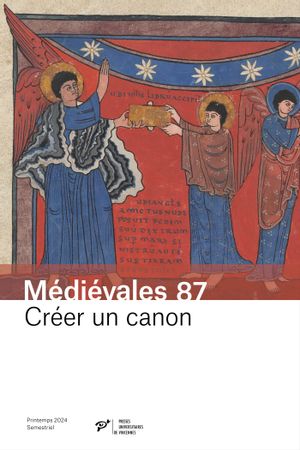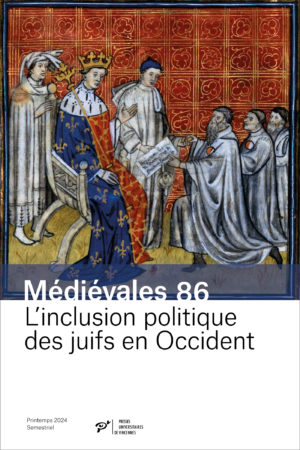Manuela MARIN : « Eastern Cooking, Western Cooking »
The question of the existence of an Adalousian cuisine, original and different from the Oriental Arab cuisine is raised in this article. To answer this question, the two extant cook-book of Andalousian-Maghribi origin are examined (the Fadalat al-hiwan d’Ibn Razin al-Tugibi and the anonymous Kitab al-tahib). These texts offer information on recipes qualified as Andalousian and also on recipes’names of Hispanic origin. Combining with these data, a list of typically Andalousian dishes is presented in the article. As a conclusion, it appears that the general character of Andalousian cuisisne is that it has a more limited repertoire of ingedrients than the Oriental cuisine. But the cooking methods, the way of combining different food elements, the « tone » of the recipies, are all, basically, the same as those practised in the Eastern Arabe World. Andalousian cuisine is defined, therefore, as a regional variant of the imported Oriental.
Ana Maria CABO GONZALEZ : « Ibn al-Baytar and his Contributions to Botany and Pharmacology in the Kitab al-Gami »
The crowing achievement of Arab botanical and pharmacological literature, the Kitab al-Gami was composed by Ibn al-Baytar, a native of Malaga who died in 1248. Conserved in over 80 manuscripts (listed here in the annex), this alphabetical dictionary of foods and medicines of vegetables, mineral or animal origin, compiles, in a methodical and critical manner, Greek, Persian and Arab sources, and at the same time integrates the author’s wealth of pratical experience. He travelled the entire Moslem word ang gathered herbs in the compagny of his followers. The wealth of material assembled by Ibn al-Baytar is revealed notably in the initial part of his entries, which are alayzed here at lenght.
Expiracion GARCIA SANCHEZ : « Uses of Spices et Aromatic Plants in al-Andalus »
Spices have played a prominent role – and still to today – in the diets of various Islamic cultures. The analysis of agricultural and botanical Andalousian texts, as well as of hisba treatis (regulating the activities of souks), has thrown light on the actual consumption of spices and on commerce concerning the products. Collating these findings with the percentages drawn from two cookbooks has given an idea of the signifiance and the purpose assigned to spices in Moslem Spain, as well as of the possible variations which have influenced the tastes of the Andalousians.
Rosa KUHNE BARBANT : « Sugar and Sweets in the Food of al-Andalus »
Contrary to general belief, the Andalusians’taste for swets was restricted by a series of socio-economical factors, especially regarding the use of industrial sugar. The basic sweetener has always been honey, and the different sorts of sugar, which were considered as medicinal substances, became part of the culinary habits only of the most priviledged classes.
Halima FERHAT : « Soufie Frugality and Zaouyas Banquets : Enlightment from Hagiographic Sources »
The vast hagiographic corpora spanning the seventh to thhe fifteenth centuries has yielded important on the diets of ascetics, and also on popular and rural eating habits. The first saints are characterized by an ascetic way of life consisting of fasting and privation. But the forming af networks, and the appearance of zaouyas accorded great importance to offering of food, which in turn prompted the brotherhood to seek subsidies and ultimately riches.
Vincent LAGARDÈRE : « Grapes, and Wine (Tenth to Fifeteenth Centuries) »
The Moslem conquest of al-Andalus did not have any adverse effects on winegrowing, nor on the consuption of grapes or wine. Andalusian agronomists from the eleventh, twelfth and thirteenth centuries consecrated a chapter of their agronomic treatises to the culture of the grapevine. Amongst these, Abu-Hayr al-Isbili of Seville and Al-Tignari of Granada are the only ones who describe the wine in a way permitting to distinguish between the varieties of wine inherited from the Roman and Wisigothic eras and those which originally came from the Near East and Mesopotamia and were acclimated in al-Andalus during the agrarian revolution of the eleventh century.
Mohamed MONKACHI : « Traditional Food in the Rural Areas of Northern Morocco »
This paper contributes to a better knowledge of the rural alimentary practices in northern Morocco in the nineteenth century, considered from a perspective of cultural continuity. A geographical study, accompagnied by historical, ethnographc and sociological notes gathered from an investigation in the areas concerned, has yieled additional information on manufacturing techniques (oil extraction, breadbaking, winemaking) as well as on substitute foods.
Françoise AUBAILLE-SALLENAVE : « Food for the New Mother in the Arabic Moslem Mediterranean World »
A study of early sources going back on the tenth century and of recent ethnographic descriptions has brought to light the similar nature of Moslem practices and beliefs concerning the new mother’s diet throughout the Moslem Mediterranean world. Much attention was givent to food during pregnancy, and even more so after childbirth, when a rich and copious diet was imposed consisting predominantly of poultry, eggs, spices and all other products susceptible of ameliorating lactation. In return, the new mother had to respect certain prohibitions. Lastly, specific dishes accompanied the ceremonies and feasts attending the day of the birth, the eigth day, and the fortyeth day after le birth.
Tahar MANSOURI : « Agricultural Production and Seaborne Trade in Ifriqiya in the Twelfth to Fifteenth Centuries »
The evolution of the economical situation in Ifriqiya cannot be analyzed from literary Arabic sources alone, which, limited in number, are often compilations offering an unchanging image in time. We have therefore tried to gain more knowledge by examining published archive document, a study which has opened a different perspective. First of all, the economy of Ifriqiya in the Middle Ages was a rural one, and as attested y trade practices, a predominatly pastoral one. Moreover, Ifriqiya imported foodstuffs from the western regions of Italy, and, at the same time, exported agricultural commodities to Venice. This, however, is not a sign of excess production in Ifriqiya, but rather an indication that Ifriqiya served as a center of transit for commerce between two European regions.
Michèle GAILLARD : « The ephemeral Promotion of a dynastic Mausoleum : The Sepulchre of Louis the Pious in Saint-Arnoul of Metz »
The sepulchre of Louis the Pious in Saint-Arnoul of Metz has often been considered as representative of the family tradition. Bunt in fact Saint-Arnoul of Metz was primarily a burial place for the women of the Caroligian family : before or after Louis the Pious no Carolingian king was buried there. One should rather relate this sepulchre to the archbishop Drogo’s ambition of elevating his city of Metz by making it the cradle of the Carolingian family : in all probability he wishd to establish Saint-Arnoul, whose patron saint was a family ancestor, as the royal mausoleum of the Carolingians.
Bernadette MORA : « Proposals for Research in Medival Epigraphy : the French Example »
French medieval epigraphy is a relatively young science. Publications to date have not always given sufficient attention to complementary and relative disciplines (such as economic and social history, toponymy, etc.), which have yet to benefit from the study of inscriptions. Various instruments of research have recently been elaborated to help exploit the rich potential of epigraphic sources. Examples demonstratig the importance of these sources in some particular fields (trades, war events, catastrophies) are given, starting mainly with the twelfth century.
Cécile AULIARD : « Farriers in the Middle Ages : Blacksmiths or Veterinarians ? »
In the late Middle Ages, the horse was without doubt an indispensable tool in Western society : as a result many craftsmen’s professional activity was directly related to this animal. Amongst these, the farrier plays a prominent role : not only does he forge the iron and shoe the horses, but he also treats the diseases of horses. This makes him a rather astonishing figure cumulating two functions a priori incompatible, that if a smith and that of a veterinarian. The farrier’s profesional skills were not limited to horses and some of them seem to have treated other animals as well and even people.






